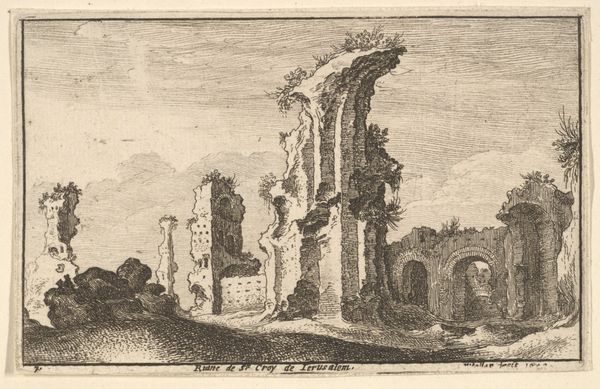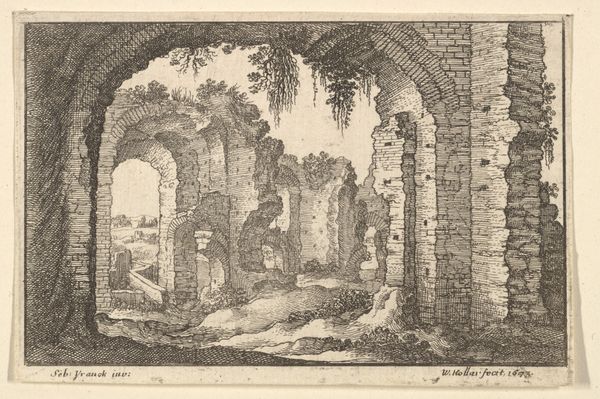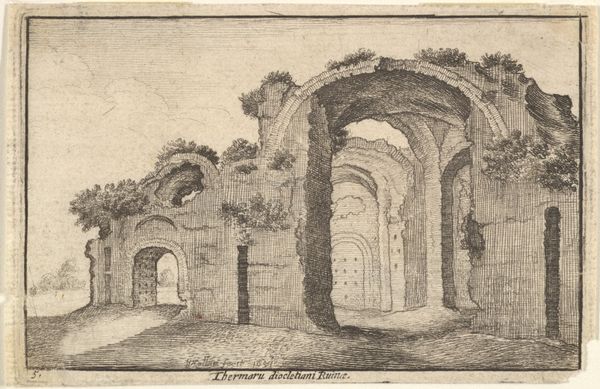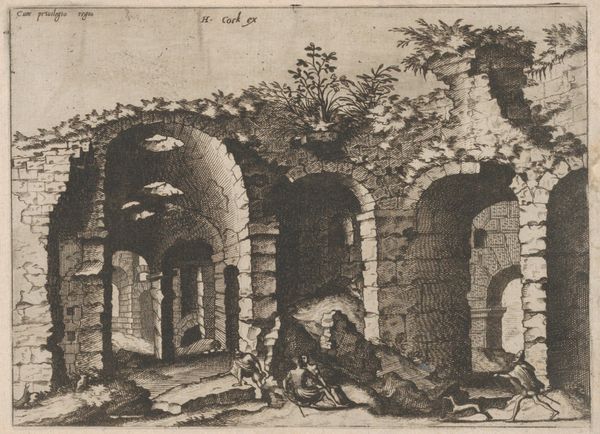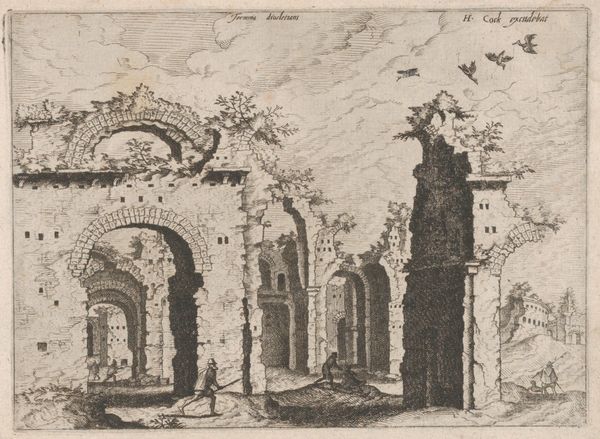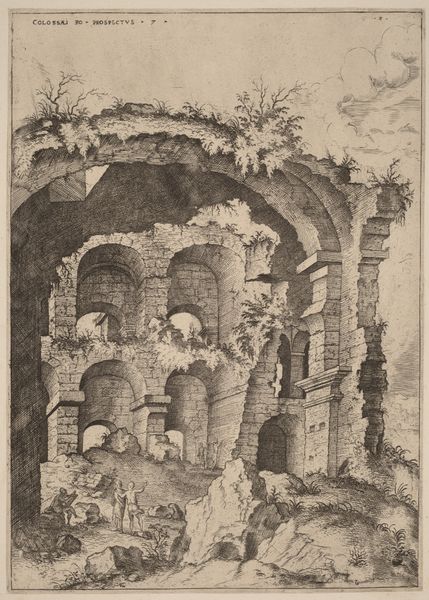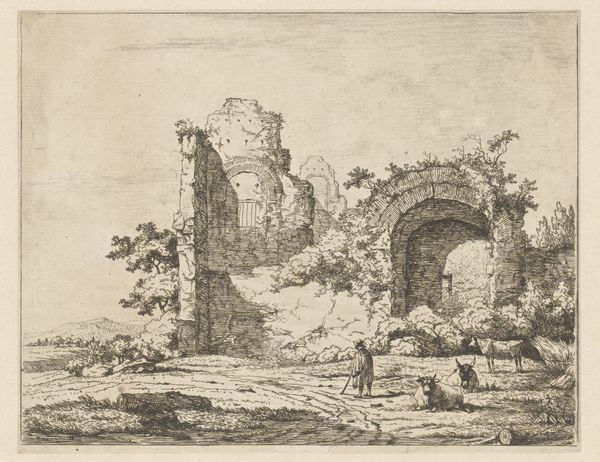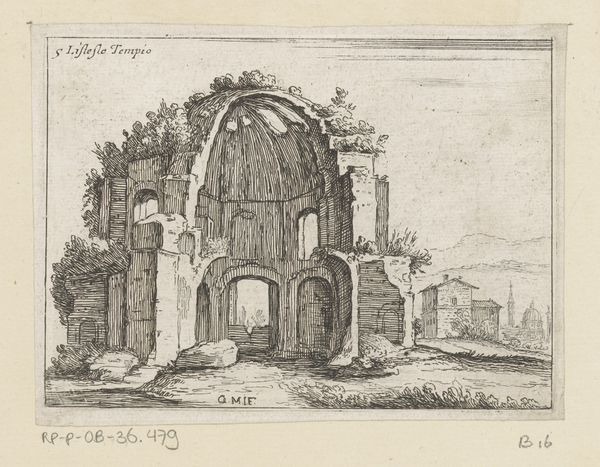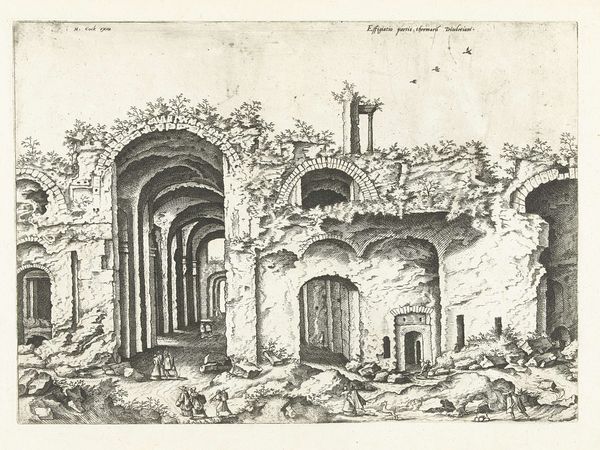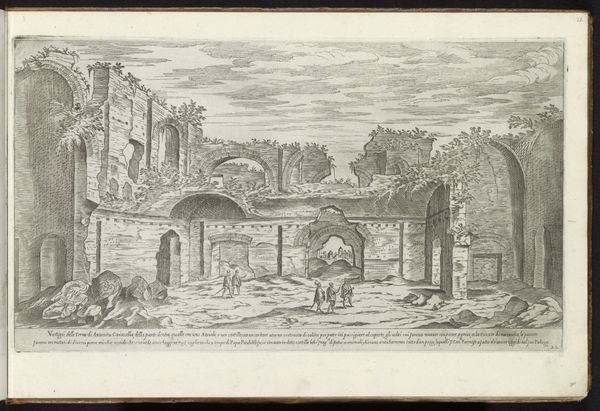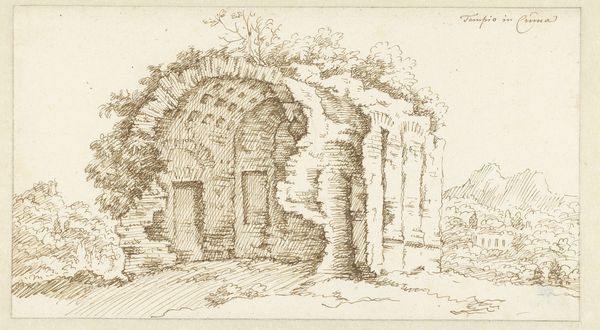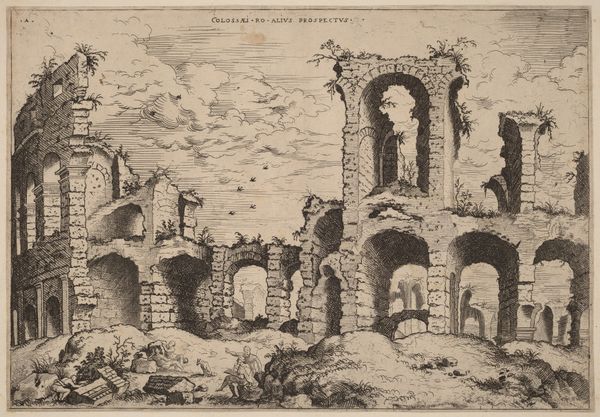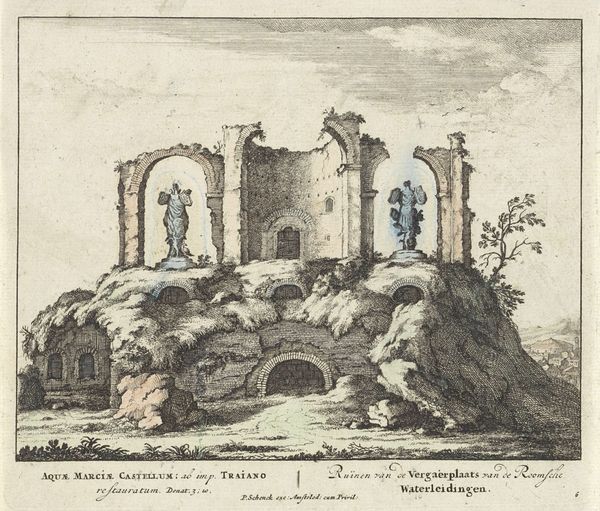
Thermaru diocletiani Ruinae (Baths of Diocletian) 1651
0:00
0:00
drawing, print, etching
#
drawing
#
baroque
# print
#
etching
#
landscape
#
history-painting
Dimensions: Sheet (clipped impression): 2 11/16 × 4 3/16 in. (6.8 × 10.6 cm)
Copyright: Public Domain
Editor: Here we have Wenceslaus Hollar's 1651 etching, "Thermaru diocletiani Ruinae (Baths of Diocletian)". I'm immediately drawn to the contrast between the delicate lines of the etching and the massive architectural ruins. It creates a sense of both grandeur and decay. What catches your eye? Curator: The intricacy of the lines indeed. Notice how Hollar employs varied hatching techniques. Denser areas of hatching create darker values, suggesting depth and shadow, while sparse lines define lighter planes, all crucial to modeling the three-dimensional form within a two-dimensional medium. The composition further divides into clear spatial relationships and formal balance to create pictorial interest. Editor: So you are drawn to the formal structure over the story it tells? Curator: The ruins are present, but their representational value hinges on how the formal devices engage. Take, for example, the contrast in texture. Note the rugged texture of the collapsing structures achieved through complex line work juxtaposed with smoother open areas evoking a light-filled space, guiding the eye through the architectural ruin. How do you feel that contrast functions in the overall reading of the artwork? Editor: I see what you mean, how the surface treatment guides how we view it. I guess I originally approached it thinking about what it meant to depict a ruin, but I am starting to see that the success of the print has more to do with *how* he represents it. Curator: Precisely. Form dictates function. Contemplate further how this manipulation of line and form crafts meaning, offering insight into the essence and not just a depiction, of a scene. Editor: I’ll never look at an etching the same way again! Thanks for pointing out the relationship between representation and form.
Comments
No comments
Be the first to comment and join the conversation on the ultimate creative platform.
